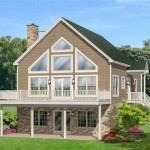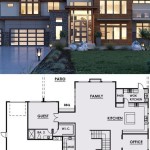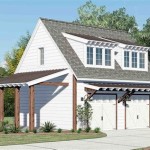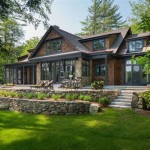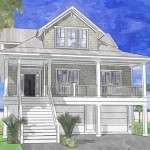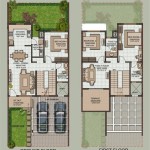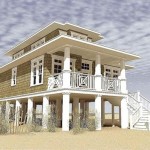Antique House Plans: A Look At Classic Home Designs in Collierville, TN
The charming town of Collierville, Tennessee, boasts a rich history reflected in its architecture. Among the most captivating aspects of this history are the antique house plans that have shaped the character of the area. Examining these plans offers a unique insight into the lifestyles, priorities, and aesthetic sensibilities of past generations. These blueprints, often meticulously drafted and preserved, reveal more than just room layouts; they tell stories of families, communities, and the evolution of architectural styles.
Antique house plans in Collierville represent a range of styles, from the simple elegance of early American farmhouses to the grandeur of Victorian-era mansions. Each style reflects the socio-economic climate of its time and the availability of materials and skilled labor. Studying these plans allows historians and architects to trace the development of building techniques, understand the evolution of interior spaces, and appreciate the enduring appeal of classic home designs.
Understanding these antique plans requires a careful consideration of various factors, including the plan's origin, the materials specified, and the detailing present. Each element contributes to a comprehensive understanding of the building's intended purpose and overall design aesthetic. This article will delve into key aspects of antique house plans found in Collierville, Tennessee, offering insights into their characteristics, historical significance, and continuing relevance.
The Architectural Styles Represented in Collierville's Antique House Plans
Collierville's architectural heritage is a tapestry woven from various styles, each contributing unique characteristics to the town's landscape. Focusing on the antique house plans associated with these styles reveals distinct design philosophies and construction techniques. Some of the most prevalent styles include:
Early American Farmhouses: These homes, often built in the late 18th and early 19th centuries, were characterized by their practicality and simplicity. Antique plans typically reveal a rectangular footprint, minimal ornamentation, and a focus on functionality. Materials used were often locally sourced, such as timber and fieldstone. The floor plans usually included a central hallway, a living room (or parlor), a kitchen, and bedrooms on the upper floor. The emphasis was on creating a comfortable and efficient living space for families engaged in agriculture.
Greek Revival: Popular in the mid-19th century, the Greek Revival style drew inspiration from ancient Greek temples. This style is characterized by symmetrical facades, prominent columns or pilasters, and triangular pediments. Antique house plans for Greek Revival homes in Collierville showcase a desire for grandeur and refinement. Interior layouts often included large, open rooms, high ceilings, and elaborate moldings. The use of classical motifs, such as dentils and acanthus leaves, was common. These homes often represented the aspirations and prosperity of the families who commissioned them.
Victorian Era: The Victorian era, spanning much of the late 19th century, saw a proliferation of architectural styles, including Queen Anne, Italianate, and Gothic Revival. Antique house plans from this period reflect a greater emphasis on ornamentation, asymmetry, and elaborate detailing. Queen Anne homes, for example, were characterized by their asymmetrical facades, turrets, bay windows, and decorative wood trim. Italianate homes featured low-pitched roofs, bracketed eaves, and tall, narrow windows. Gothic Revival homes incorporated pointed arches, steeply pitched roofs, and decorative tracery. The diverse range of Victorian styles reflects the growing wealth of Collierville and the desire for individual expression in home design.
Craftsman Bungalows: Emerging in the early 20th century, the Craftsman bungalow style emphasized simplicity, honesty, and natural materials. Antique house plans for these homes typically reveal a low-pitched roof, wide eaves, exposed rafters, and a prominent front porch. Interior layouts were designed for comfort and efficiency, with open floor plans and built-in cabinetry. The use of natural wood, such as oak and redwood, was common. Craftsman bungalows reflected a reaction against the ornate styles of the Victorian era and a desire for a more functional and aesthetically pleasing living space.
These are just a few of the architectural styles represented in Collierville's antique house plans. Each style offers a glimpse into the past and provides valuable insights into the town's rich architectural heritage. Further research into specific plans and historical records can reveal even more about the people who designed and built these homes.
Key Elements in Analyzing Antique House Plans
Interpreting antique house plans involves more than simply identifying room layouts. A thorough analysis requires careful attention to various elements that provide clues about the building's intended use, construction techniques, and aesthetic sensibilities. Some key elements to consider include:
Floor Plan Layout: The floor plan is the foundation of any house plan, and antique plans are no exception. Analyzing the layout reveals insights into the intended use of each room, the flow of movement within the house, and the overall spatial organization. For example, the location of the kitchen in relation to the dining room can suggest the importance of formal dining versus casual family meals. The size and placement of bedrooms can indicate the number of occupants and their social standing. Antique plans may also reveal features that are no longer common in modern homes, such as separate servants' quarters or formal parlors for receiving guests. Understanding the floor plan layout is crucial for grasping the overall design intent.
Materials Specifications: Antique house plans often include detailed specifications for the materials to be used in construction. These specifications can provide valuable information about the availability of resources, the construction techniques employed, and the overall quality of the building. For example, the type of wood specified for framing can indicate the local availability of timber and the preferred building practices of the time. The types of finishes specified for walls and floors can reveal the aesthetic preferences of the homeowner and the availability of manufactured goods. Examining the materials specifications provides a deeper understanding of the building's construction and its relationship to the surrounding environment.
Detailing and Ornamentation: The level of detailing and ornamentation in a house plan can reveal the aesthetic aspirations of the homeowner and the social standing of the building. Antique plans often include intricate drawings of moldings, cornices, window frames, and other decorative elements. The presence of elaborate ornamentation suggests a desire for grandeur and refinement, while the absence of such detailing may indicate a focus on simplicity and practicality. The specific motifs used in the ornamentation can also provide clues about the architectural style and the cultural influences of the time. Analyzing the detailing and ornamentation is essential for understanding the aesthetic character of the building.
Notes and Annotations: Antique house plans often include handwritten notes and annotations that provide valuable insights into the design process and the construction of the building. These notes may include instructions for builders, clarifications of design details, or records of changes made during construction. Studying these notes can reveal the challenges faced by the architects and builders, the adaptations made to the original design, and the overall evolution of the building. The handwriting style and the language used in the notes can also provide clues about the age and origin of the plan. Carefully examining the notes and annotations can add a personal and historical dimension to the analysis of antique house plans.
By carefully considering these key elements, researchers and enthusiasts can gain a deeper understanding of the antique house plans found in Collierville, Tennessee, and appreciate the rich architectural heritage of the town.
The Significance of Antique House Plans in Modern Architecture
While antique house plans represent a bygone era, their significance extends far beyond historical curiosity. These plans offer valuable lessons and inspiration for modern architects, designers, and homeowners. They provide a link to the past, a source of design ideas, and a reminder of the enduring principles of good design.
Preservation of Historical Knowledge: Antique house plans serve as invaluable records of architectural history. They document the evolution of building techniques, the changing preferences of homeowners, and the cultural influences that shaped the built environment. By studying these plans, architects and historians can gain a deeper understanding of the past and learn from the successes and failures of previous generations. The preservation of these plans is essential for maintaining a connection to our architectural heritage and ensuring that valuable knowledge is not lost.
Inspiration for Modern Design: Antique house plans can serve as a source of inspiration for modern design. The classic layouts, proportions, and detailing found in these plans can be adapted and incorporated into contemporary homes. For example, the open floor plans of Craftsman bungalows can inspire modern designs that prioritize functionality and connection to nature. The elegant proportions of Greek Revival homes can inform the design of modern residences that seek to evoke a sense of grandeur and timelessness. By drawing inspiration from antique house plans, architects can create homes that are both modern and respectful of the past.
Sustainable Design Principles: Many antique house plans embody sustainable design principles that are increasingly relevant in today's world. These plans often feature passive heating and cooling strategies, natural materials, and efficient use of space. By studying these plans, architects can learn valuable lessons about how to design homes that are both environmentally responsible and comfortable to live in. For example, the orientation of a house on its site can maximize sunlight exposure in the winter and minimize heat gain in the summer. The use of local materials can reduce transportation costs and minimize environmental impact. By incorporating these principles into modern designs, architects can create homes that are both sustainable and aesthetically pleasing.
Understanding Regional Architectural Identity: Antique house plans contribute to the identification and preservation of a region's unique architectural character. In Collierville, Tennessee, the distinct styles reflected in these plans – from early farmhouses to Victorian mansions – contribute significantly to the town's identity. By studying and understanding these plans, communities can make informed decisions about preserving and enhancing their architectural heritage. This knowledge can guide restoration efforts, inform new construction projects, and promote a sense of place that is rooted in the past while embracing the future.
In conclusion, antique house plans are not simply relics of the past. They are valuable resources that offer insights into architectural history, inspiration for modern design, and guidance for sustainable building practices. By studying and preserving these plans, we can ensure that the lessons of the past continue to inform the architecture of the future, especially in historically rich areas like Collierville, Tennessee.

Collierville Tn New Construction Homes For Com

Collierville Tn Homes For Real Estate Redfin Page 3

Collierville Tn New Homes For Construction In Redfin

Collierville Tn New Construction Homes For Com

New Light Fixtures Collierville Tn Homes For Redfin

1329 Bray Station Rd Collierville Tn Houses For

Southern Homes We Love Pella Windows Doors

Collierville Tn Homes For Real Estate Redfin Page 6

Fleming Gardens Colony Farms Collierville Real Estate Homes For Com

Peterson Lake Heights Collierville Real Estate Homes For Com
Related Posts

